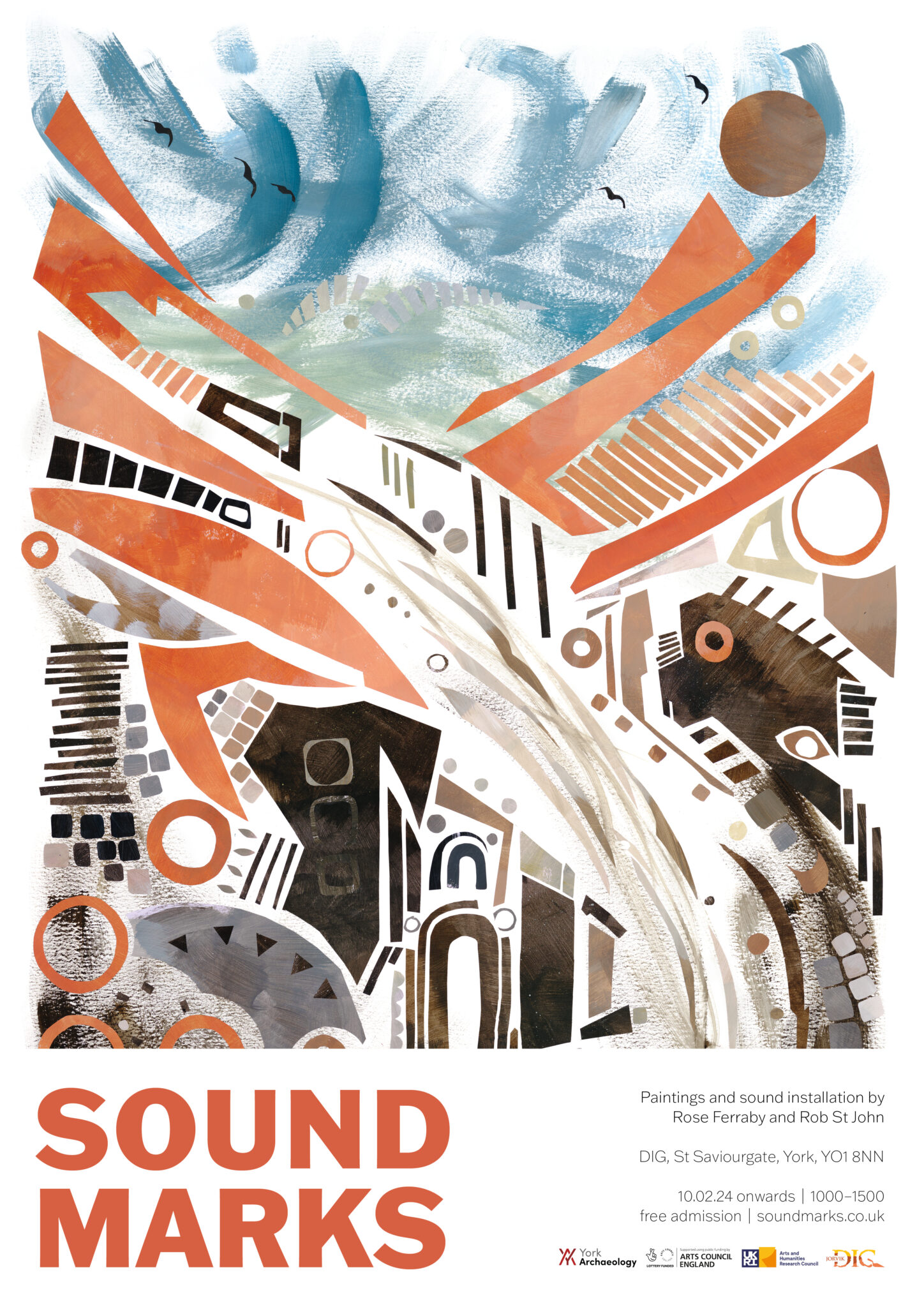Soundmarks York
2024
Soundmarks is a collaboration between artist and archaeologist Rose Ferraby and artist Rob St John. It explores and animates the archaeological remains and stories of the Roman settlements of Aldborough and York.
For their exhibition at DIG York in 2024, Rose and Rob have used sound and visual art to assemble narratives of the often-invisible archaeology of Roman York. They have been inspired by new work by the ‘Roman York Beneath the Streets’ project, which has used a combination of antiquarian records, old excavations and new radar surveys to gain new understandings of this remarkable Roman centre.
Drawing on these archaeological discoveries and the modern day city, Rose and Rob have created an art trail featuring six locations that together allow us to imagine our way beneath the streets and back in time to Roman York. The route takes in the vast cemeteries beneath the Railway station, the forgotten cargoes of long-gone ships in the River Ouse, arrivals and departures by the great walls of the fortress in the Museum Gardens. Underneath the Minster we feel the power and might of the Roman empire at the heart of the fort, whilst here at DIG there is a Roman landscape in transition from the industry of harbours on the Foss to a burial ground. Finally, back up the hill at Micklegate we find ourselves in the heart of the civilian settlement, with the animation and hubbub of daily life.
The sounds and images invite you to imagine the possibilities of past worlds and lives here in York. Rose’s painted collages explore objects, textures and topographies that give glimpses of small voices and broad narratives of time. Rob’s sound compositions conjure rhythms and atmospheres created from recordings of stone slabs and pipes in the Minster, the flooded surge of the River Ouse and the forlorn call of ancient horns.
The artworks form an art trail that follows a circular walk around the city. You can find the map along with sound and visual ‘soundmarks’ on the project website.
The project was funded by the AHRC (AH/V015338/1) as part of the Roman York Beneath the Streets project at the University of Cambridge and Reading University, in collaboration with the York Archaeological Trust.

